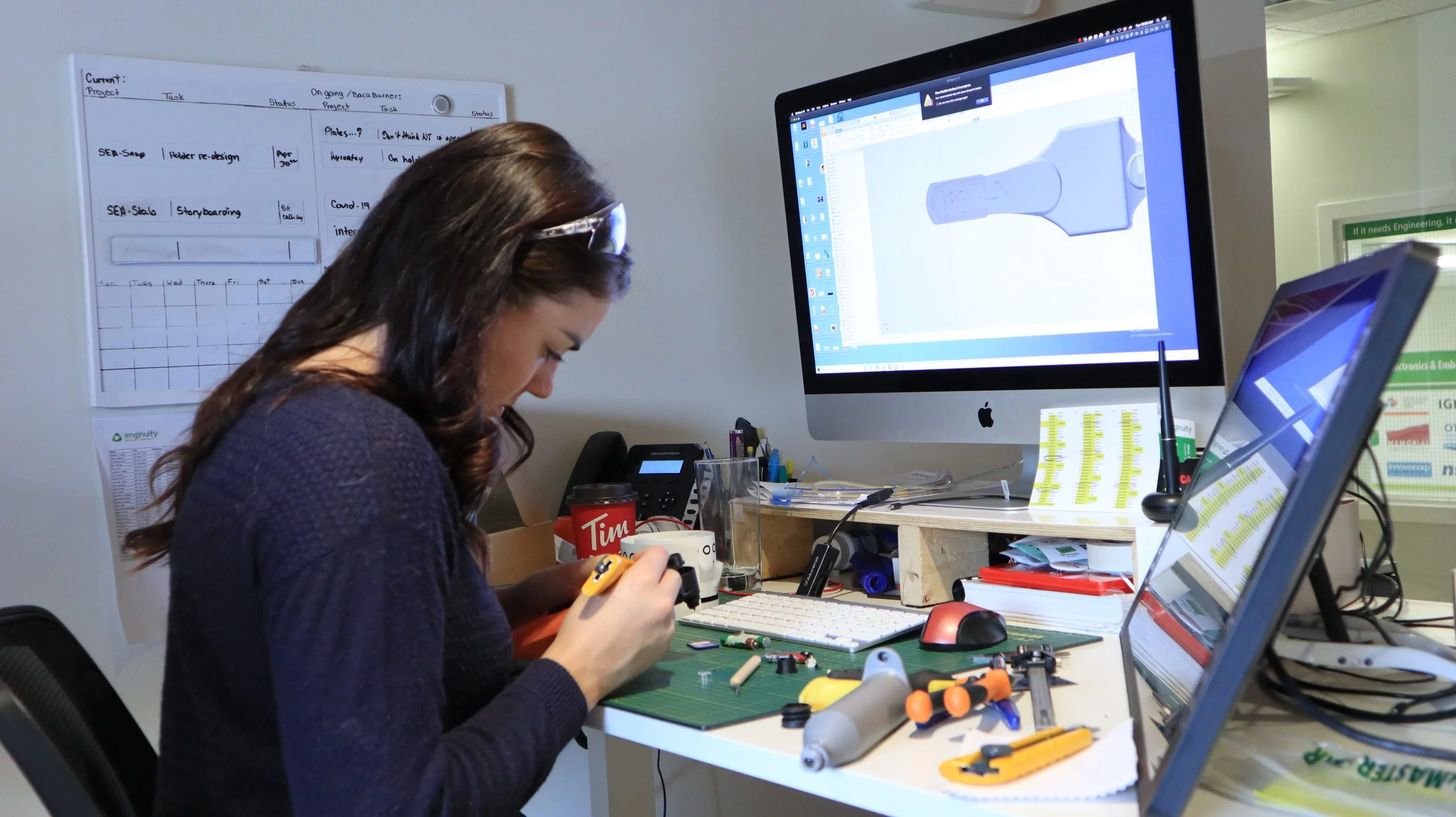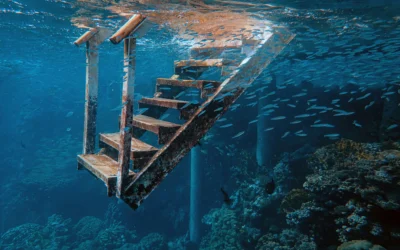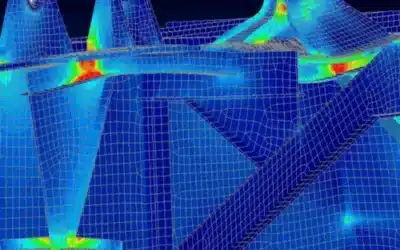No matter the complexity of an engineering project, ultimately people are going to use it. Thinking about carrying, gripping, pushing buttons, reading screens; this is where Industrial Design hits Enginuity’s Design Control Process.
Industrial Design is an interdisciplinary design process that takes the form and function of a product and makes sure that everything is well integrated, balancing the needs of the manufacturer and, more importantly, the end user. It works to bridge the gap between technical engineering aspects of product design and makes sure that there’s always someone thinking from a user’s perspective involved in design decisions.
Enginuity’s Industrial Designer, Alicia Stewart, moved to Atlantic Canada to be back ‘home’ after graduating from Carleton University’s acclaimed Industrial Design Program. In conversation she states, “Industrial design can take a lot of forms in a project. It can be concept sketches during Discovery, or it can be multiple design iterations and prototyping throughout the product development cycle. I work closely with engineers, assess functionality & usability and help to ensure everything that makes it to final design is ‘fit for purpose’.” Including Industrial Design at every stage in a Product Design is part of our success, and given that Enginuity covers a broad range of sectors, no two days ever look the same.
“[My day to day] varies greatly depending on the project and where that project is in its phases. I can be brainstorming with the project team, thinking through sketches, or building cardboard mockups to prove a concept. If a project is in later Preliminary Design or Detailed Design stages, I could be working on look and feel, or comfort and control. In later phases, my focus turns to Design for Manufacturing, where problem solving and knowledge of industrial processes often inform decision-making and model making.” Alicia said, of what her day-to-day looks like.

Stewart working on some hand prototypes
When asked of some of the common challenges are in the field, Alicia continues, “It’s all about being dynamic. When you start with a concept and you have your end goal in mind, you know roughly what you’re aiming for. But throughout the process, since you’re dealing with many different variables like manufacturing cost or investor appeal, your design changes. So you have to be thinking on your feet. Client needs change, priorities shift, and new materials come along.”
“Industrial Design is such a broad field that integrates engineering, manufacturing, ergonomics, aesthetic and interaction design, graphic design, and marketing, it’s often challenging explaining why it’s important to a client. Often times it takes showing them – most people know the feeling of picking up a well-designed product; its comfortable, it suits the need, and every small detail has its purpose during the use cycle. I find that if you can hand them a physical prototype or even sketches of a concept and walk them through the ‘why’ of each detail, then they not only have a better understanding of why industrial design is important, but they get excited about it.” But Stewart says despite the many changes, it’s what she enjoys about the job. “It’s nice because I’m not the type of person who can do the same thing day in, day out. So it’s great that it changes so much,” she adds.
“Practice, and make sure to stay current in the latest processes and materials. Materials and manufacturing are a huge influence in your designs, and if you don’t know about new processes or a new type of sustainable plastic that can be used for a certain application, then it’s impossible to include in your design. So make sure to stay current in design research and practice,” is what Stewart recommends for young industrial design students and professionals just starting out in the field. After all, Industrial Design is all about making sure that the end users will have the best possible user experience, while ensuring the product’s functionality is maximized, to ensure business success and give products a competitive advantage. It’s a growing field that’s constantly evolving, as new techniques, processes and material discoveries are made to make even more innovative products. And in the fast-paced world of technology where manufactured products and consumer products are continuously being improved for form, function, and sustainability, Industrial Design will continue to be an integral part of the engineering process.
So you want your product design done quickly, creatively, and on budget? We can help.



